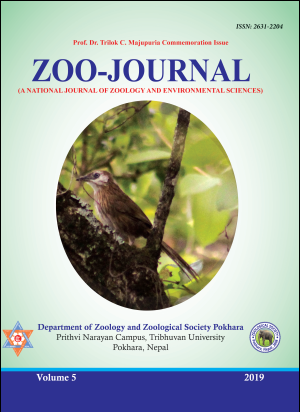Survey on Carp Seed Production in Private Fish Hatcheries of Nepal
DOI:
https://doi.org/10.3126/zooj.v5i0.34776Keywords:
Private hatcheries, seed production, cultivated carpsAbstract
Aquaculture is rapidly expanding in Nepal as a result demand for fish seed is increasing. Access to adequate high quality seed is the basis for sustainable aquaculture development. Due to quick and high profitability, and encouraging government policy, a number of private hatcheries are increasing especially in southern parts of the country. A survey of 40 private fish hatcheries was conducted from different regions (Eastern-9; Central-19, Western-6, Midwestern-3 and Farwestern-3) representing 15 districts (Morang, Sunsari, Saptari, Siraha, Dhanusha, Mahottari, Bara, Chitwan, Nawalparasi, Rupandehi, Kapilvastu, Banke, Bardiya, Kailali and Kanchanpur) of Terai and inner Terai to assess the status of different stages of seed production within five year from March 2009 to April 2014. The survey revealed that total production of hatchlings, fry and advanced fry within five years were 15852.6, 879.5 and 259.5 million respectively. All these development regions showed increasing trend of their own contribution within a total of five years. The percentage of eggs fertility and hatchability was more (78.3 and 71.7) in mid western development region followed by eastern (68.9 and 61.7), central (68.3 and 61.7), far western (68.3 and 61.7) and western (68.3 and 60.0). Though private hatcheries played important role in seed production, improving their efficiency are imperative, further studies are recommended to overcome constraints on carp seed production.
Downloads
Downloads
Published
How to Cite
Issue
Section
License
© Department of Zoology and Zoological Society Pokhara, Nepal

